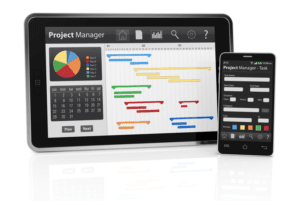![]()
I have the amount in my books, but it’s not in the bank yet…that I get. If I Dbt A/R and Cr Cash, then I am taking the cash away from my company, even though the company has recorded it. To add to the confusion, won’t the DIT be an outstanding item on my Bank Rec? What happens to the DIT in the following month when it finally shows up on the Bank Statement and I’ve already recorded it in my prior month’s receipts? Let’s imagine that you recorded a check for $715, but the bank cleared that check for $751. The check was used to pay for utilities and was recorded to utilities expense for $715.

The Statement of Cash Flow
By comparing the bank statement balance with their own records, individuals and businesses can ensure the accuracy of their financial transactions and maintain the integrity of their accounts. The bank statement balance refers to the amount of money recorded by the bank in a particular account at a given point in time. It is a statement provided by the bank to the account holder, summarizing all the transactions that have taken place during a specific period. The bank statement balance includes deposits, withdrawals, interest earned, fees charged, and any other relevant transactions. It is an official record maintained by the bank and is considered a reliable source of information for reconciling accounts. The book balance and bank balance may fluctuate from time to time due to errors in bank transactions that need to be corrected.
Bank Statement and the Company’s Accounting Record: The Differences
- Complete the Balance per BANK side of the bank reconciliation format.
- This includes recording unaccounted bank transactions and correcting errors found during the review.
- The bottom line of both sides of the bank reconciliation must be the same amount.
- However, with today’s online banking a company can prepare a bank reconciliation throughout the month (as well as at the end of the month).
- Principal that is to be received within one year of the balance sheet date is reported as a current asset.
There may also be timing differences that do not require journal entries, bank balance book such as deposits in transit and uncashed checks. Bank statement balance and cash book balance are two different financial records that are used to track and reconcile a company’s financial transactions. The bank statement balance refers to the amount of money shown in the bank statement, which is provided by the bank and includes all the transactions made by the company.
Printable Check Registers- Free PDFs!

Before looking for issues, make sure you haven’t listed the same entry twice or overlooked to record it in either column. You might have transposed two digits if there is a difference of nine digits or fewer. Now, the only thing left to do after loading the data is to go through the entries and make sure each one is categorized appropriately. This procedure is made simple and effective by maintaining a separate business bank account. If you are an amateur when it comes to generating balance sheet and balancing the books. Then, you must not worry because we are here to help you out with it.
Book balance is the cash amount shown in a company’s accounting records. It includes all recorded transactions, regardless of whether they have cleared the bank account. This means that even pending transactions, such as uncleared checks or deposits in transit, are considered part of the book https://www.chaykatruckdrivingschool.com/how-to-accept-stock-donations-easy-steps-for/ balance. One of the first steps in the reconciliation process involves matching the transactions listed on the bank statement with those recorded in the company’s books. This includes verifying deposits, withdrawals, and any other financial activities.
Account

The distinction between book and bank balances is key to reconciliation. The book balance represents the amount recorded in an organization’s accounting records, reflecting all internally processed transactions. The bank balance, on the other hand, is the amount reported by the financial institution, which may not immediately reflect recent transactions due to processing delays.
- So what do you do if your numbers and the bank’s numbers don’t align?
- More often than not, a company’s bank statement contains entries that are not in its cash book.
- See if you can complete the reconciliation before watching the video.
- While the book balance shows the company’s internal cash position, the bank balance is the externally reported figure by the financial institution.
- An income statement basically totals the income, totals the expenses, and subtracts the expenses from the income to arrive at a profit or loss figure.
- Internal controls and automated reconciliation software can help track outstanding checks, reduce errors, and improve efficiency.
A passbook is a record of transactions provided by the bank that is similar to a bank statement or a bank statement in book form. Bank Book or Bank Journal is a subsidiary book of accounts that accountants use to maintain records of the banking transactions at their end. This template is a very simple check register spreadsheet for Excel or Google Sheets. It includes a column for recording expense categories, and the formula used for the Balance makes it easy to add and delete rows. The sum of the values in each column, less the liabilities from the assets, should equal the equity of your company. The book balance and the bank balance of a corporation, however, might diverge in a number of circumstances.

How to Download and Use the Printable Check Registers

Deposits in transit are funds that have been received and Accounting For Architects recorded by the company but have not yet appeared on the bank statement. These items need to be accounted for to reconcile the book balance with the bank balance. Book balance and bank balance are two distinct figures that often require careful examination to ensure financial accuracy. The book balance refers to the amount of money recorded in a company’s accounting records.
Accounting for Cash at the Company
See if you can complete the reconciliation before watching the video. If not managed, outstanding checks can distort financial statements, leading to inaccurate reporting of liabilities and potentially violating accounting standards like GAAP or IFRS. This misreporting could impact financial ratios, such as the current or quick ratio, which are critical indicators of short-term financial health. Misleading ratios could affect business decisions or violate loan covenants, resulting in penalties or increased scrutiny. Another important attribute of the bank statement balance is that it includes any fees or charges imposed by the bank. These fees may include monthly maintenance fees, overdraft fees, or transaction fees.



